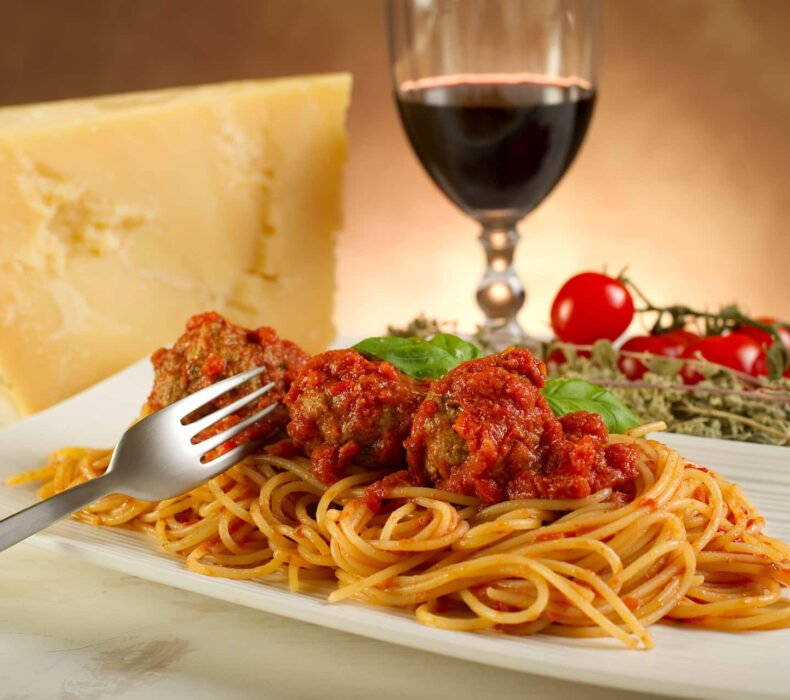Pasta, a culinary delight cherished across the globe, has found a home in both American and Italian kitchens. However, the preparation and consumption of this beloved dish reveal a flavorful divide between the two cultures. This article will explore pasta perspectives, the distinct approaches, and the nuances that explain American pasta vs. Italian pasta, the main differences.
American Pasta vs Italian Pasta: An Introduction
As pasta continues to evolve in kitchens around the world, the key lies in savoring the distinctive qualities each tradition brings. Whether you find comfort in a hearty bowl of American-style macaroni and cheese or relish the elegance of an Italian carbonara, the beauty of pasta lies in its ability to transcend borders and unite food enthusiasts in a shared love for this timeless dish.
American Pasta: The Melting Pot of Flavors
In Italian restaurants in Los Angeles, pasta has undergone a delightful fusion, reflecting the nation’s diverse culinary influences. From classic spaghetti and meatballs to creamy Alfredo, American pasta embraces a wide range of flavors and textures. The American palate tends to gravitate towards heartiness and boldness, with dishes often featuring robust meat sauces, generous cheese toppings, and creative ingredient combinations.
Italian Pasta: A Symphony of Simplicity
On the other side of the spectrum lies the Italian approach to pasta – a celebration of simplicity and the inherent flavors of high-quality ingredients. Italian pasta dishes are known for their restraint, allowing the natural taste of pasta to shine through. Classic Italian recipes often feature minimalistic sauces, such as the revered Aaglio e olio, a harmonious blend of garlic, olive oil, and red pepper flakes.
How is Italian Pasta Different from American?
The Flavors are Different
Italian Pasta: Celebrates simplicity, allowing the natural flavors of high-quality ingredients to shine. Sauces are often minimalist, emphasizing the essence of key components.
American Pasta: Embraces a bold and diverse flavor palette. Sauces tend to be hearty, featuring robust meat sauces, creamy concoctions, and creative ingredient combinations in the best Italian food in Los Angeles.
Diversified Ingredient Selection
Italian Pasta: Prioritizes fresh, seasonal produce and high-quality pasta. Ingredients are chosen carefully to complement each other, creating a harmonious dish.
American Pasta: Reflects a fusion of culinary influences. Dishes may incorporate a wide range of ingredients, reflecting the diverse cultural landscape of the United States.
Contrast in Preparation Techniques in Italian Restaurants in LA
Italian Pasta: Relies on traditional, uncomplicated techniques to enhance the pasta’s natural qualities—emphasis on cooking al dente for optimal texture.
American Pasta: Allows for creative experimentation. Fusion dishes and diverse cooking methods, including baking and grilling, are common.
What are the Cultural Influences?
Italian Pasta: Rooted in centuries-old traditions, reflecting regional diversity in Italy. Recipes passed down through generations, preserving authenticity.
American Pasta: Shaped by the multicultural fabric of the United States. Various cultural influences contribute to a dynamic and evolving pasta landscape served at the best Italian restaurants in Los Angeles.
Portion Sizes and Presentation
Italian Pasta: Generally features smaller portion sizes, with an emphasis on savoring the flavors. Presentation is often elegant and focused on the quality of each component.
American Pasta: Known for generous portion sizes, reflecting a culture of abundance. The presentation may be bold and colorful, emphasizing visual appeal.
Conclusion
In the flavorful world of pasta, both American and Italian traditions bring something unique to the table. While American pasta embraces boldness and variety, Italian pasta celebrates simplicity and the purity of flavors. This detailed discussion has ensured clarity when it comes to American pasta vs. Italian pasta.
Frequently Asked Questions
What are the main differences between American and Italian pasta?
The main differences between American pasta and Italian pasta lie in the approach to flavors and preparation. American pasta tends to be hearty and bold, often featuring robust meat sauces and creative ingredient combinations. Italian pasta, on the other hand, celebrates simplicity, allowing the natural taste of high-quality ingredients to shine through.
How has the fusion of American and Italian pasta traditions influenced culinary trends?
The fusion has resulted in a new wave of dishes that bridge the culinary gap, such as Italian-American cuisine. Additionally, the interest in authentic Italian pasta varieties and recipes has grown, contributing to a more nuanced understanding and appreciation for the art of Italian pasta preparation.
What role do cultural influences play in shaping pasta traditions in America?
Cultural influences play a significant role, with American pasta reflecting the nation’s diverse culinary heritage. The melting pot of flavors in the U.S. has led to a wide range of pasta dishes influenced by various cultural traditions, creating a dynamic and diverse pasta landscape.



